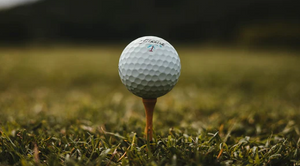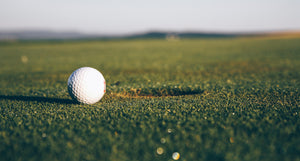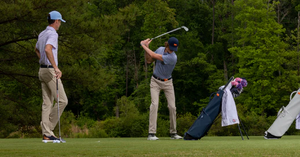How to Regrip Golf Clubs
The grip is the only point of contact between the player’s hand and the golf club, so, like the tires on a car, a good grip is essential to optimize performance.
The grip is one part of your club that will wear out and weaken over time. How long it lasts depends upon the specific club and how often you play it. Your favorite clubs will need regripping more frequently than those you use only occasionally.
Most players will clean their golf grips regularly to remove dirt, grime, and materials like sunscreen. But if cleaning doesn’t return the grip to a tacky and firm state, then it is time to consider regripping the club.
Choosing the Right Golf Grips to Regrip a Golf Club
The good news is that if your grips have become worn out, you can regrip them at home. But before you do, consider the following factors to ensure you get the proper grips.
Size
There is a range of midsize, oversized, standard, and undersized grips, and all these options revolve around how big your hands are. Using the wrong size grip will seriously impact your game, so how can you tell which is the right size for you?
When you hold the club, your fingertips should gently rest against the base of your thumb. If you feel them digging into your hand, the grip is too small. Likewise, if they don’t touch, the grip is too bulky or oversized.
Too wide a grip will interfere with the correct wrist action on the shot, while a narrow grip will cause a pull.
Professional advice can be essential to help you choose the proper grip size. It’s crucial for new golfers and older players who may suffer from limitations like arthritis and require a wider grip for comfort reasons.
Texture
The choice of texture comes down to individual player preference. Every player will strike that balance between feel and security at a slightly different point.
Too much texture, and it is hard to get the right feel. Too little, and the club will feel insecure as you swing it, moving laterally and not offering the precision you want.
The texture is also relevant to your style of play, which may be fierce and aggressive or laid back and relaxed.
Whether or not you choose to wear a golfing glove or gloves influences the choice of texture, and this in itself will depend on the type of club you are regripping. Many players wear a glove on their lead hand but take it off for putts or short-iron shots.
Firmness
The rule of thumb for firmness is that the higher the swing speed, the greater the need for firmness and control. A firm grip offers greater stability; this refers to the club, not how the player holds it.
The grip should match the swing. A soft grip may produce unintentional and unwanted force at higher swing speeds.
Players with slower swing speeds or weaker hands, such as children or those with physical limitations, may prefer a softer and tackier grip.
If the grip on the club is wrong, it will change the club's feel and hold. It can cause you to try and over-compensate for any lack of firmness in holding the club, which will affect your swing.
Weatherproofing
The weather can significantly impact how you hold a golf club. Wet or just damp, humid weather will impact the grip on any club, and this is where a tacky firmness is essential to preserve your shot.
Plastic or polymer grips become slippery when wet, but you can use tack spray to get around this. Corded versions avoid this problem, but for players who like to take a firm hold on the club, they can prove too uncomfortable and unforgiving on the hands.
Consider when and how often you use the club and the types of courses you play on, plus the time of year. The environmental conditions are an essential element of making the right decision for a new grip on your club.
Color
Brightly colored golf grips show dirt and will allow you to see how clean they are, unlike traditional black grips, which disguise grime.
Rule Compliance
Unsurprisingly, there are rules covering all golf clubs and golfing equipment. Regripping a club is not allowed to stray beyond specific parameters, and there is plenty of definition of what constitutes a legal grip in the rules.
One of those rules is that the grip length should be a minimum of seven inches so that the player can hold the club with both hands. The USGA rules also prohibit grips molded for the hands since that can act as a cheat for players and guide them to the same hold every time.
Regripping a Golf Club in 4 Steps
You can regrip your golf clubs quite easily, although some players choose to ask their golf shop to do this for them. A good golf pro can advise you on the best type of grip to choose, even if you want to regrip the club yourself.
Here’s how to regrip a club in four simple steps.
1. Remove the Old Grip
Remove the old grip with a sharp utility or Stanley knife. Point the face of the club towards the floor and slice the old grip open. Face the knife away from your body and cut downwards for safety, never towards you.
Cut carefully so that you avoid damaging the shaft of the club. Peel the old grip away and gently scrape off any tape. There will be a residue on the handle, which you must remove before fitting the new grip.
Remove this with a grip solvent and a clean cloth.
2. Apply Two-sided Grip Tape
Two-sided tape comes in two widths, ¾” and 2”.
Remove the paper backing and apply ¾” grip tape. Choose how much of the shaft you want to tape. Next, apply the tape in a spiral from the top of the shaft to the point at which the grip will finish.
Then, apply 2” tape lengthwise. You can keep layering the tape until you achieve the thickness you want.
3. Apply Solvent
Using a golf tee, plug the hole at the end of the grip and pour the solvent into the open end. Cover the grip and shake vigorously to distribute the solvent.
Remove the tee and pour any surplus solvent onto the tape on the club shaft. Catch the excess in a tray. You can use this if you are regripping more than one club.
4. Slide the Grip into Place
While the grip tape is wet, pull the new grip over the end of the shaft and into place. Take care to ensure the shaft is snug at the end of the grip before the tape dries.
Make sure the clubface and the grip are square. It takes about one minute before the tape loses its slip and dries, so you’ll need to quickly make any adjustments and fine-tuning.
The new grip will take several hours to dry, so allow at least a day before you use the club.
If you want to use environmentally friendly alternatives to solvents, you will need to wait longer before the club is dry. If you use compressed air to dry, there is no wait time.
Your golf pro or supplier can provide a specific pressure tip for compressed air. This tip attaches to the compressed air source, with the other end inserted into the hole at the end of the grip.
Compressed air expands the new grip, which returns to standard size once it is in place. It can make it easier to fit the grip, and this is also an effective way to remove the old grip if you don’t want to use a knife.
Why Re-Grip a Golf Club?
Worn grips impact player performance. If the handle is tatty and the surface of the grip compromised, it will be harder for you to get a secure feel on the club.
The handling also has to do with how much pressure you apply. Too much pressure can restrict your swing arc, while too little can lead to a loose hold and a wild swing.
Gripping the club harder to get a firm purchase will affect the club, your gloves, and most importantly, your game.
Regripping a golf club will return it to factory standard and enhance your game and increase the lifespan of what is usually a perfectly good club.
How Often Should You Re-Grip a Golf Club?
The answer to this question depends purely on how often you use the club. Infrequently used irons will keep their grip for years if they are well looked after, cleaned regularly, and stored in the right conditions.
A club that you play all the time will need regripping more frequently. If you play two to three times a week in mild climates, then a good average to work on would be every 18 months for a new grip.
Regrip any clubs that look worn or smooth at the beginning of every season.
Cleaning a Golf Grip
Keeping golf grips clean will prolong their life and integrity and mean you need to replace them less often.
Carry cleansing wipes in your golf bag for use on the course. Use warm soapy water and a brush with soft bristles for rubber or corded grips and a cloth for softer grips at home. Avoid harsh chemicals which damage the integrity of the material.
After cleaning, rinse with clear water and dry with a clean towel.
Conclusion
Regripping a golf club is an essential part of equipment maintenance. Poor grips will affect your game, and it is so easy to refit new grips and keep them clean and in good condition.
Ready to look as clean as your newly regripped clubs? Check out the STITCH apparel shop today for golf apparel that beautifully marries function and fashion.


